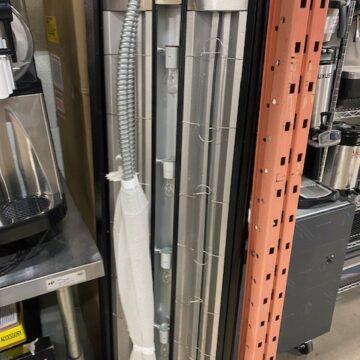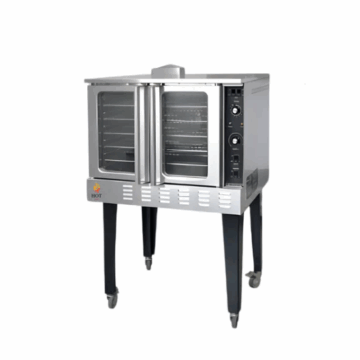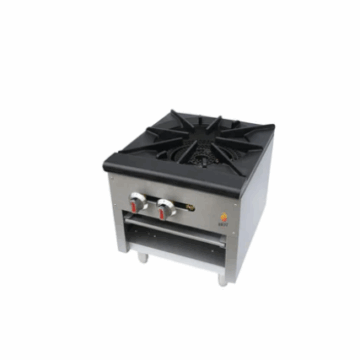Welcome to The FED (Foodservice Equipment Depot)! Whether you’re running a bustling restaurant kitchen, a cozy bakery, or a busy hotel kitchen, having the right equipment is crucial to ensuring efficiency, consistency, and quality in your culinary creations. One of the most essential tools in any commercial kitchen is the commercial mixer. Today, we’ll look into techniques for mastering the mix with your commercial mixer, ensuring your doughs, batters, and mixtures are perfectly blended every time.
1. Choosing the Right Mixer
Before you can master mixing, it’s essential to choose the right mixer for your needs. At The FED, we offer a range of commercial mixers, including planetary mixers, spiral mixers, and vertical cutter mixers. Here’s a quick guide to help you decide:
- Planetary Mixers: Versatile and ideal for mixing, beating, and whisking. Perfect for pastries, creams, and general mixing tasks.
- Spiral Mixers: Specialize in dough mixing. Ideal for pizzerias, bakeries, and any establishment focusing on bread and pizza.
- Vertical Cutter Mixers: Excellent for chopping, mixing, and emulsifying large quantities quickly. Great for sauces, soups, and minced meat.
2. Understanding Mixing Techniques
Creaming Method
Used primarily for cakes and cookies, the creaming method involves beating butter and sugar together until light and fluffy. This technique incorporates air into the mixture, resulting in a tender and airy texture. Use the paddle attachment on your planetary mixer and start on a low speed, gradually increasing to medium.
Kneading Dough
When using a spiral mixer, it’s all about developing gluten. Mix your ingredients until the dough comes together, then knead on a low speed. The dough should become smooth and elastic. Avoid over-mixing as it can make the dough tough.
Whisking and Beating
For recipes requiring whipped cream, meringue, or mousse, the whisk attachment is your best friend. Start at a medium speed to combine ingredients, then increase to high to incorporate air and achieve the desired volume and texture.
3. Timing and Speed Control
Different mixtures require different speeds and mixing times. Here are some general guidelines:
- Low Speed: For initial mixing of dry ingredients, incorporating delicate ingredients, and reducing the risk of over-mixing.
- Medium Speed: For creaming, beating, and general mixing tasks.
- High Speed: For whisking, whipping, and incorporating maximum air into mixtures.
4. Proper Maintenance and Cleaning
To ensure longevity and optimal performance of your commercial mixer, regular maintenance and proper cleaning are essential:
- Daily Cleaning: After each use, clean the bowl, attachments, and mixer body. Detach the bowl and attachments and wash them with warm soapy water.
- Weekly Maintenance: Inspect the mixer for any signs of wear and tear. Lubricate moving parts if necessary and tighten any loose screws or bolts.
- Professional Servicing: Periodically, have your mixer professionally serviced to address any mechanical issues and ensure it operates smoothly.
5. Troubleshooting Common Issues
Even the best mixers can encounter problems. Here’s how to troubleshoot common issues:
- Mixture Not Combining Properly: Check if you’re using the correct attachment and mixing speed. Ensure ingredients are added in the right order.
- Overheating: This can happen if the mixer is overworked. Give it a rest and ensure you’re not exceeding the recommended batch size.
- Strange Noises: Unusual sounds could indicate a mechanical issue. Stop the mixer and inspect for any obstructions or loose parts.
6. Maximizing Efficiency and Output
To maximize the efficiency of your commercial mixer:
- Batch Preparation: Prepare ingredients in advance to reduce downtime between batches.
- Standardize Recipes: Use standardized recipes to ensure consistency in mixing times and speeds.
- Train Staff: Ensure all kitchen staff are trained in using the mixer correctly, including attachment selection, speed settings, and safety protocols.
Conclusion
Mastering the mix with your commercial mixer can transform the quality and efficiency of your culinary creations. By understanding the various techniques, maintaining your equipment, and troubleshooting common issues, you’ll ensure that your kitchen runs smoothly and produces consistently excellent results.
At The FED, we’re committed to providing you with the best commercial kitchen equipment and support. Visit us at www.thefedepot.com to explore our range of mixers and other essential kitchen tools.
Happy mixing!
Purchase All Your Commercial Kitchen Equipment From The Foodservice Equipment Depot (The FED)
Purchase All Your commercial kitchen equipment in Calgary, AB from The Foodservice Equipment Depot (The FED). Explore our used Calgary Restaurant Equipment. Enjoy a seamless online ordering experience, ensuring fast and frictionless access to professional-grade food service equipment. Shop at our Restaurant Equipment Store in SE Calgary, AB. or our Restaurant Supply Online Store.
For more insightful articles and tips, visit The FED Blogs.







